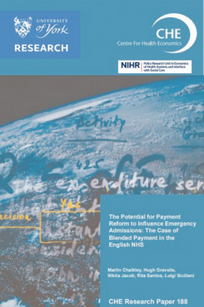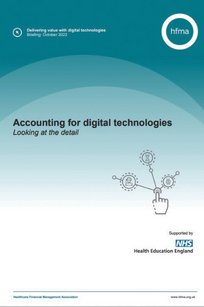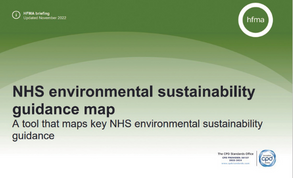Technical / Technical review - December 2022
NHS England has been running an initiative to understand more about the differences between local cost models and the methodology required for the national cost collection. The aim is to identify opportunities to reduce the burden on costing teams. Costing practitioners have for a long time called for a simpler approach, focused on providers’ main material costs. They argue that they don’t use all the very granular detail locally and that the time taken to compile costs reduces the time available to use the data to drive improvement. During September, NHS England asked trusts to submit details of the data fields they have available to support cost allocation and to list the cost pools used in their local model. And it has followed this up in November with a wider-ranging survey on local costing approaches, with two separate versions: one for acute, mental health and community trusts; and one for ambulance trusts. The surveys are open until 6 January.
NHS England has issued an updated Code of governance for provider trusts covering both NHS trusts and foundation trusts. The code was last updated in 2014 and the new code reflects the significant changes in NHS structures and policy since then. It remains based on the UK corporate governance code (and in particular the 2018 version of the code). Compliance with the provisions in the code are on a ‘comply or explain’ basis. The code covers five main areas: board leadership and purpose; division of responsibilities; composition, succession and evaluation; audit, risk and internal control; and remuneration. NHS England has also published Guidance on good governance and collaboration and Addendum to your statutory duties – reference guide for NHS foundation trust governors. All three of the documents were consulted on this year and the government has also published its response to the consultations.
 The effect of blended payments on hospitals’ tendency to admit patients from accident and emergency departments is likely to vary by trust and region, according to a University of York study. The researchers at the university’s Centre for Health Economics said the payment reform would change incentives for hospitals and implies a lower return on admission of patients. They added that their results indicated that payment reform alone is likely to have only a modest impact on hospital admissions. However, they also insisted that it was too early to draw robust conclusions on the impact of blended payments and highlighted that they had considered only one element of the emergency care system.
The effect of blended payments on hospitals’ tendency to admit patients from accident and emergency departments is likely to vary by trust and region, according to a University of York study. The researchers at the university’s Centre for Health Economics said the payment reform would change incentives for hospitals and implies a lower return on admission of patients. They added that their results indicated that payment reform alone is likely to have only a modest impact on hospital admissions. However, they also insisted that it was too early to draw robust conclusions on the impact of blended payments and highlighted that they had considered only one element of the emergency care system.
NHS England has published a framework setting out how it will operate in the new health service structure created by the Health and Care Act 2022. The operating framework describes the roles of NHS England, integrated care boards and NHS providers. NHS England said the document demonstrated how accountabilities and responsibilities will be allocated to improve health and care, maximising taxpayer value for money.
The Department of Health and Social Care clarified elements of its Group accounting manual 2022 to 2023 in October after a consultation on the document ended. In its response to the consultation, the Department replied to views on leasing standard IFRS 16, changes to the manual stemming from implementation of the Health and Care Act 2022, and some other minimal changes. The Department has made the guidance more explicit in some areas, though in others it has noted comments but not changed the draft to avoid being overly prescriptive.
 The HFMA has published a briefing on accounting for digital technologies. It said this is a complex area and it is not always clear if the NHS body is purchasing an asset or a service. In accounting, the former would be treated as capital expenditure, while the latter is revenue or both. The briefing sets out a series of questions designed to help decide the appropriate accounting treatment, and looks at the role of NHS finance teams, management, and auditors.
The HFMA has published a briefing on accounting for digital technologies. It said this is a complex area and it is not always clear if the NHS body is purchasing an asset or a service. In accounting, the former would be treated as capital expenditure, while the latter is revenue or both. The briefing sets out a series of questions designed to help decide the appropriate accounting treatment, and looks at the role of NHS finance teams, management, and auditors.
NHS England has published a protocol that providers and systems must follow when changing in-year revenue financial forecasts. The protocol covers two scenarios: a provider considering a deterioration in forecast that the system can absorb, in which case the operation of the protocol will be overseen by the system; and a system forecasting a deficit, in which case oversight will be by the region. The guidance, described as ‘version one’, also sets out the consequences for deterioration in forecasts. These include strict sign-off processes for revenue investments and additional review and reporting requirements.
Draft NHS enforcement guidance sets out how NHS England intends to exercise its enforcement powers for both integrated care boards and providers. The guidance explains when NHS England may decide to take action and what action it can take. It also covers how NHS England will decide what sanctions to impose and the high-level processes it will follow when taking enforcement action. A consultation on the revised enforcement guidance was due to close in early December.
 A new environmental sustainability guidance map from the HFMA brings together the key guidance, tools and examples to support the NHS in meeting its commitments to environmental sustainability and the net-zero targets. Aimed in particular at boards, finance teams and their clinical collegues, the map is split into three sections: the strategic framework; enabling environmental sustainability; and specific examples. It will be updated periodically as new guidance is produced.
A new environmental sustainability guidance map from the HFMA brings together the key guidance, tools and examples to support the NHS in meeting its commitments to environmental sustainability and the net-zero targets. Aimed in particular at boards, finance teams and their clinical collegues, the map is split into three sections: the strategic framework; enabling environmental sustainability; and specific examples. It will be updated periodically as new guidance is produced.
Related content
This webinar series offers colleagues of ICS organisations the opportunity to discuss common priorities, challenges, and successes within their field.
We are excited to bring you a fun packed Eastern Branch Conference in 2025 over three days.